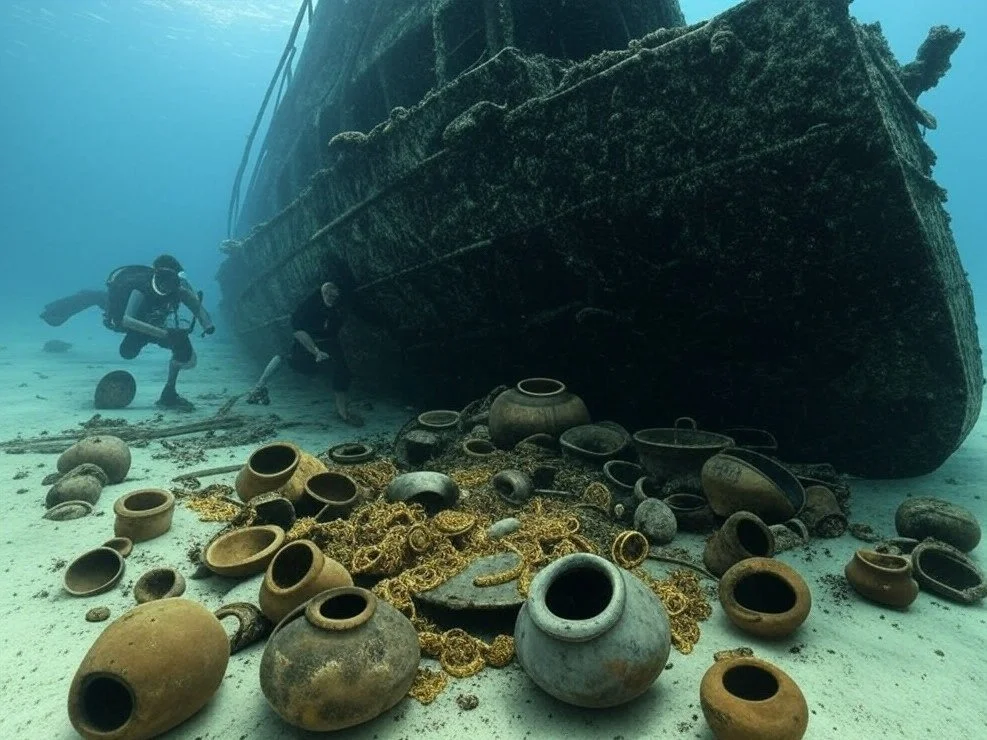Introduction
The discovery of the Uluburun shipwreck off the coast of Turkey stands as one of the most significant maritime archaeological finds of the 20th century. Dating back to the late Bronze Age, approximately 14th century BCE, this shipwreck provides a rare and invaluable glimpse into the complex trade networks that connected the civilizations of the Eastern Mediterranean. Laden with a diverse cargo, the Uluburun shipwreck has reshaped scholarly understanding of economic, cultural, and technological exchanges in antiquity.
Discovery and Excavation
The Uluburun shipwreck was discovered in 1982 by a sponge diver near the southwestern coast of Turkey. Underwater archaeologists from the Institute of Nautical Archaeology, led by George Bass and Cemal Pulak, conducted an extensive excavation from 1984 to 1994. The wreck, located at a depth of 44–61 meters, required over 22,000 dives to fully document and recover its cargo.
The Cargo and Its Significance
The ship’s cargo, composed of raw materials and finished goods from various regions, highlights the extensive trade networks of the Bronze Age. Key findings include:
Raw Materials
Over 10 tons of copper ingots, sourced from Cyprus, indicating large-scale metal trade.
Approximately one ton of tin ingots, a crucial component for making bronze, likely originating from Central Asia or Anatolia.
Canaanite glass ingots, suggesting an advanced glass production industry in the Levant.
Luxury and High-Value Items
Ivory and ebony from Africa, used in high-status decorative art and furniture.
Gold and silver artifacts, including Egyptian jewelry, indicating elite connections.
Mycenaean ceramics, suggesting trade with the Greek mainland and Aegean islands.
Organic and Perishable Goods
Pomegranates, figs, and almonds, hinting at the dietary practices of the time.
Resin from the Near East, possibly used in perfume or ship maintenance.
Cultural and Economic Implications
The Uluburun shipwreck reveals a world of interconnected trade, diplomacy, and economic interdependence among major Bronze Age powers, including Egypt, the Hittite Empire, Mycenaean Greece, and the Levantine city-states. The presence of goods from such diverse regions underscores the sophisticated commercial networks that flourished more than 3,000 years ago.
Furthermore, the ship’s design and construction suggest influences from both Canaanite and Aegean shipbuilding traditions, reinforcing the notion of technological and cultural exchanges among ancient seafaring civilizations.
Challenges and Conservation Efforts
The excavation and conservation of the Uluburun artifacts posed significant challenges due to the delicate nature of underwater preservation. Advanced conservation techniques, such as desalination and chemical stabilization, have ensured the long-term study and display of these artifacts in museums, particularly at the Bodrum Museum of Underwater Archaeology in Turkey.
Conclusion
The Uluburun shipwreck serves as a time capsule of Bronze Age trade, illuminating the vast economic and cultural interactions that defined the ancient world. Through meticulous excavation and analysis, this discovery has deepened scholarly understanding of early maritime commerce, international relations, and technological advancements. As further research unfolds, the Uluburun wreck will continue to provide invaluable insights into the complexities of ancient trade routes and the civilizations they connected.







